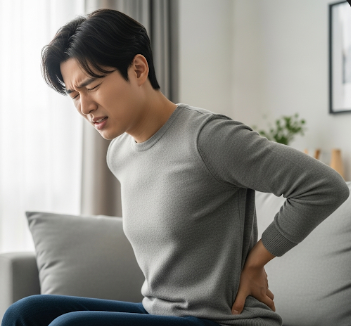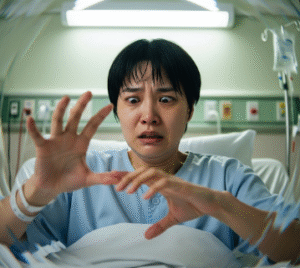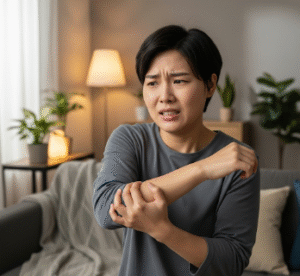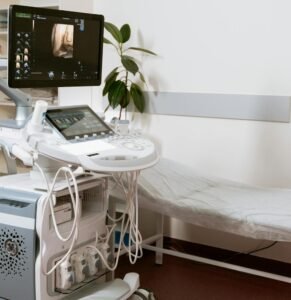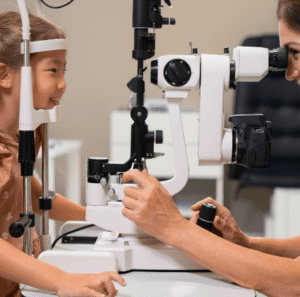Overview
Musculoskeletal pain refers to discomfort or pain affecting the muscles, bones, ligaments, tendons, and joints. It is one of the most common types of pain experienced worldwide, ranging from mild aches to severe chronic conditions that impair mobility and daily functioning. Musculoskeletal pain can occur in any part of the body, including the back, neck, shoulders, knees, and hips.
In Korea, musculoskeletal pain is managed through a combination of orthopedic care, physical therapy, pain management, and integrative medicine, offering both acute and chronic pain solutions to improve patients’ quality of life.
Key Facts
➤ Musculoskeletal pain can be acute or chronic.
➤ Commonly affects the back, neck, shoulders, knees, and hips.
➤ Causes include injury, overuse, inflammation, arthritis, or degenerative conditions.
➤ Chronic musculoskeletal pain may lead to reduced mobility and emotional distress.
➤ In Korea, treatment options include physical therapy, acupuncture, orthopedic interventions, and rehabilitation programs.
What is Musculoskeletal Pain?
Musculoskeletal pain arises from damage, strain, or inflammation in the supporting structures of the body, such as:
➔ Muscles – strains, spasms, or overuse injuries.
➔ Bones – fractures, osteoporosis, or structural deformities.
➔ Joints – arthritis, bursitis, or dislocations.
➔ Ligaments and tendons – sprains, tendinitis, or tears.
It may present as:
- Dull, aching pain (common in chronic conditions).
- Sharp, stabbing pain (often from acute injury).
- Stiffness or limited range of motion.
- Swelling or tenderness in the affected area.
Symptoms Related to Musculoskeletal Pain
➤ Persistent or intermittent pain in muscles, bones, or joints.
➤ Stiffness, especially in the morning or after inactivity.
➤ Swelling, tenderness, or redness in affected joints or tissues.
➤ Muscle weakness or reduced endurance.
➤ Pain worsened by movement, lifting, or exercise.
➤ Occasionally, referred pain radiating to nearby areas.
Causes / Possible Causes
Musculoskeletal pain can result from a wide range of mechanical, inflammatory, or systemic conditions:
Mechanical Causes
➤ Muscle strain or ligament sprain due to injury, overuse, or repetitive motion.
➤ Poor posture leading to spinal or joint stress.
➤ Prolonged sitting or sedentary lifestyle causing muscle imbalances.
Inflammatory and Degenerative Causes
➤ Osteoarthritis causing joint cartilage degeneration.
➤ Rheumatoid arthritis or autoimmune conditions causing joint inflammation.
➤ Bursitis or tendinitis from overuse or repetitive stress.
Systemic or Secondary Causes
➤ Fibromyalgia or chronic fatigue syndrome causing widespread pain.
➤ Osteoporosis increasing bone fragility and pain.
➤ Infection or metabolic disorders affecting musculoskeletal structures.
Risk Factors
➤ Older age with degenerative joint or bone changes.
➤ Sedentary lifestyle or poor ergonomics.
➤ Occupations involving heavy lifting or repetitive movements.
➤ Previous musculoskeletal injury or trauma.
➤ Chronic inflammatory or autoimmune conditions.
➤ Obesity increasing stress on joints and muscles.
Complications
Chronic musculoskeletal pain may lead to:
➤ Reduced mobility and flexibility, limiting daily activities.
➤ Sleep disturbances due to persistent discomfort.
➤ Emotional distress, including anxiety or depression.
➤ Muscle weakness or atrophy from disuse.
➤ Secondary problems like postural imbalance or gait abnormalities.
When Should I See My Doctor?
Medical evaluation is warranted if:
➤ Pain is severe, persistent, or worsening despite rest or home care.
➤ Accompanied by swelling, redness, or warmth in joints or muscles.
➤ Associated with numbness, tingling, or weakness.
➤ Pain follows trauma or injury.
➤ Chronic pain interferes with daily life or sleep.
➤ Suspected underlying conditions such as arthritis, osteoporosis, or autoimmune disease.
Early intervention can prevent complications, restore function, and improve quality of life.
Care and Treatment
Home Care and Lifestyle Measures
➤ Rest and avoid activities that worsen pain.
➤ Apply ice or heat therapy depending on acute or chronic pain.
➤ Gentle stretching and range-of-motion exercises.
➤ Maintain good posture and ergonomics at work and home.
➤ Over-the-counter pain relievers or anti-inflammatory medications as needed.
Medical Treatments
➤ Physical therapy for strengthening, flexibility, and posture correction.
➤ Prescription medications such as NSAIDs, muscle relaxants, or corticosteroids for inflammation.
➤ Injections (e.g., corticosteroid or hyaluronic acid) for joint pain.
➤ Surgery in severe cases, such as joint replacement or tendon repair.
Preventive Measures
➤ Regular exercise to maintain muscle and joint strength.
➤ Balanced diet with adequate calcium and vitamin D for bone health.
➤ Avoid repetitive strain; use ergonomic equipment and proper lifting techniques.
➤ Weight management to reduce stress on joints and muscles.
Treatment Options in Korea
Korean medical facilities offer comprehensive musculoskeletal care:
Diagnostic Services
➤ Imaging: X-ray, MRI, CT, and ultrasound for bones, joints, and soft tissues.
➤ Laboratory tests for inflammatory or autoimmune markers.
➤ Functional assessments to evaluate range of motion, strength, and posture.
Therapies and Supportive Care
➤ Physical therapy and rehabilitation programs tailored to patient needs.
➤ Acupuncture and traditional Korean medicine therapies for pain relief.
➤ Pain management clinics offering medication, injections, and multidisciplinary care.
➤ Education and guidance for posture, ergonomics, and lifestyle modifications.
✅ In summary: Musculoskeletal pain is a widespread condition affecting muscles, bones, and joints. Causes range from injury and overuse to chronic inflammatory or degenerative conditions. In Korea, patients benefit from advanced diagnostics, medical treatment, physical therapy, and integrative care to relieve pain, restore function, and prevent recurrence.

